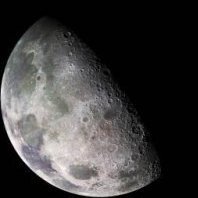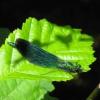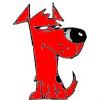Search the Community
Showing results for tags 'Aircraft Carrier'.
-
After 1 year of absence, i finally return. This time i want to recreate the Preparing phase before the launch in the Aircraft carrier Kaga. it took me quite a while to gather material and also research, in the end i think i did a decent job recreating the scene. Thanks for watching and cheers from Vietnam
- 67 replies
-
- 106
-

-

-
- 1/350
- Aircraft Carrier
-
(and 1 more)
Tagged with:
-
Dear all I remember building this kit as a kid way back in the 60's. Can't remember the kit manufacturer though. I've looked on Tamiya's website (they are only listing Japanese aircraft carriers) and Scalemates, to find out what paints are required, but no luck. Cannot find it on here either. If anyone has built this particular kit, could they let me know the required paints as printed in the instructions. Thanks in advance.
- 4 replies
-
- Tamiya
- Aircraft Carrier
-
(and 1 more)
Tagged with:
-
Dear modelling enthusiasts For my first contribution to Britmodeller, I attach here some images of my just completed 1/700 HMS Eagle (R.05). This is the old 1976 Fujimi kit, and was a bit of a challenge due to reasons including old, brittle plastic, and missing pieces (eBay purchase). The only upgrade was a set of 1/700 railing. Otherwise built out of the box and home made items. This was also my first attempt at creating an ocean diorama base. I tried to represent the Eagle at high speed. Best regards Marcello
- 10 replies
-
- 41
-

-

-
- cold war
- Aircraft Carrier
-
(and 1 more)
Tagged with:
-
Just bought the Trumpeter 1:350 Graf Zeppelin aircraft carrier. Excited to get stuck in- previously built the Airfix 1:350 HMS Illustrious and am keen to get stuck into a more novel carrier. Also bought the set of ICM acrylic paints. Currently been using enamel for years but am keen to make the switch- any experience with these gratefully recieved!
- 2 replies
-
- 4
-

-
- aircraft carrier
- ship
-
(and 1 more)
Tagged with:
-
The USS Hornet (CV-8), the seventh U.S. Navy ship of that name, was a U.S. Navy Yorktown Class aircraft carrier. During the Second World War, she launched the Doolittle Raid on Tokyo and participated in the Battle of Midway and the Buin-Faisi-Tonolai Raid. In the Solomon Islands campaign, she participated in the capture and defence of Guadalcanal and the battle of the Santa Cruz Islands where she was irretrievably damaged by enemy torpedoes and dive bombers. In the face of an approaching Japanese surface force, the Hornet was abandoned and then torpedoed and sunk by approaching Japanese destroyers. The Hornet was in service for a year and six days and was the last aircraft carrier of the American fleet ever sunk by enemy fire. For these actions she received four stars of service, a citation for the Doolittle Raid in 1942, and her 8 Torpedo Squadron received a Presidential Unit Commendation for extraordinary heroism for the Battle of Midway. His wreck was located in late January 2019 near the Solomon Islands. Merit stopped producing this box a year and a half ago. It's not easy to find a used one now at a reasonable price. This box is replaced by the Yorktown at Trumpeter, but there is no kit available at the moment as far as I know... I added the MK1 kit and the MK1 wooden deck kit (also with PE inside). I've been working on forward for two days now. I find that there are some details missing, but the reason, at least for the foredeck (it's not really a forecastle) is probably that there are no pictures of this part of the ship to my knowledge. Only a few shots from outside can help a little. Moreover this part is under the flight deck and less visible compared to the rest. So you have to have a little imagination... The front end of the Yorktown CV-5, not necessarily identical. Some pictures of the progress: Installation of the portholes, then of a transparent rhodoïd behind. Improvement of the shingles by simulating a shingle with a file, few details... The front AA platform, the shielding is not easy to mount, it must be perfectly formed to fit . I've added two small lattice platforms for the cannons. I also added a ladder because nothing is planned at Merit to go up there... Luckily, I still have some Bismarck. The two front paravans. I counted 9 pieces for one... I've added some access hatches on the deck. I have also reproduced the soldering lines of the deck and the forward block with the cutter. The port door has since been straightened. I don't know what the two holes in the deck near the capstans are for, a mystery, I'll hide them with an access plate probably... I still have the anchor lashings to install. (Scratch) Compared to the plan of the Yorktown, two mooring bollards are missing on the rear of the manoeuvring range. Trumpeter's ship must never dock... There's scratch in the air... PS: A little reminder of the marine terms used especially on the guys. This book has followed me throughout my career... A gold mine.
- 104 replies
-
- 11
-

-
- 1/200
- Aircraft Carrier
-
(and 1 more)
Tagged with:
-
I’ve always loved GHQ’s ‘Micronaut’ line of 1/2400 scale warships. Intended to be used as wargame counters, these models are simple to assemble and ridiculously tiny, but the detail on them is first rate! This one is one of the Japanese navy’s ill-fated light aircraft carriers, the IJN Ryujo.
-
Dear Colleagues After 3 years work off and on I finally finished the beast. You are looking at the 1/700 Fujimi kit of Kaga from late 1941 with Fujimi’s own PE and wood planking extra. Then it is dressed with Veteran models 12.7 cm AA guns, Lion Roar 25 mm AA guns, davits, Nanodread life boats and searchlights, Rainbow launches (I could go on). The sponson supports are largely scratch built. I am particularly proud of the Zeros waiting to take off. Rather than use decals these were spray painted using my own home-made masks. She was originally designed to be a battleship but following the limits of the Washington Treaty was converted to an aircraft carrier in 1933 initially with 2 flying off decks but this was then changed to having two enclosed hanger decks in 1935. In line with the doctrine of the time she retained a battery of 8" guns for self defence. With Akagi she formed the 1st Carrier Division which struck at Pearl Harbour. She was sunk at Midway in 1942. Hope you like it? Andrew
- 20 replies
-
- 45
-

-

-

Eduard DKM Graf Zeppelin Upgrades (53206 & 53207 for Trumpeter) 1:350
Mike posted a topic in Aftermarket
DKM Graf Zeppelin Upgrades (53206 & 53207 for Trumpeter) 1:350 Eduard The Graf Zeppelin was one of those almost projects from Nazi Germany, who beforehand had dismissed aircraft carriers, and never fully committed to the concept even during construction. Coupled with the loss of some of their important maritime assets and their lack of native coastline the Zeppelin was shelved, moved and finally abandoned before war's end, which possible gives part of the impetus to those that wonder what would have been. There have been few kits over the years, until Trumpeter gave us their new tooling recently, and now we have Eduard producing their usual raft of sets this time sets 3 & 4 in round 2 to finish off improving the detail over and above what's in the box. As usual with Eduard's Photo-Etch (PE) and Mask sets, they arrive in a flat resealable ziplok package, with a white backing card protecting the contents and the instructions that are sandwiched between. Part 3 – Antennas & Island (53206) Another large fret that also includes gun emplacements, details for the range-finders, searchlight upgrades, and platforms for the smaller gun mounts. The antennae are of course present, as well as more in-scale solid upstands on the island; plus extra railings for the areas, and some skins for the floors; funnel details; a huge array of mast parts as well as antennae; a substantial replacement for one of the island parts with doors and windows etched out with a choice of open or closed doors that have integral frames; plus a few more railings! Part 4 – Railings & Nets (53207) This set contains two sheets of PE with a load more railings, some that replace the kit railings, but also new parts, detail under the nose of the deck; doors; cranes; stowage lockers; ladders and bracing wires for the fold-up masts at edge of the deck, and of course the nets to prevent cries of "Man overboard!". More boat detailing that includes some kit surgery to replace the superstructure; pulleys, wires and railings for the crane; launch cradles and PE canopies for the Bf.109Ts, Fi.167s and Stukas that are included in the kit; and even a Kubelwagen and four Kettenkrads that you build up from 100% PE, all of which is laid out in easy-to-follow diagrams to ensure you don't mess up. Those vehicles are the highlight of all the sets for me so I had to pinch the photos from Eduard's site to show you, although I wonder what the tracks of a Kettenkrad would do to the deck, even though they are rubberised. Review sample courtesy of -
Apart from the usual details on Wikipedia etc., does anyone have any updated details on the carrier's dimensions? I'd like to have a bash at a scratchbuild but I only have the length and breadth details. That's not enough to work out the waterline contours, which would be my basis for the rest of the model. There are plenty of photographs but without the hull dimensions I'm at a bit of a loss at getting started. cheers Mike
-
Due February at HobbyLink Japan: https://hlj.com/product/TRP05627 The real ship was never completed so I don't know how we judge this one for accuracy. Price is equivalent to US$125, which seems reasonable enough.
-
- 1
-

-
- graf zeppelin
- trumpeter
-
(and 1 more)
Tagged with:
-
Evening all, With some Royal Navy aircraft carriers being released recently, I wanted to learn more about what colour the flight decks were. The Asian company instructions recommend dark greys, whilst Airfix recommended Humbrol 30 which was more a forest green. Thanks to some contacts I have made through another forum, I have been able to draw upon the investigative skills of some methodical folks who have obtained a wealth of documentation from various archives detailing which colours the Royal Navy were to use and how they were to be made aboard the ship or in the dockyards. From 1933 until non-slip paints were made available in a wide range of colours in mid-1941ish, the Admiralty prescribed AP631 Bronze Grey for aircraft carrier flight decks. Armed with copies of the relevant Admiralty Fleet Orders, and extracts from the Rate Book of Naval Stores from various years courtesy of my new friends, I had the formula to make the original oil paint from a list of base ingredients and imperial units. With the exception of white flake lead pigment, which is not required for AP631 in particular, all original pigments and liquids are still available commercially. Bronze Grey requires Zinc white, yellow ochre, black, white spirit, boiled linseed oil and terebine dryers to make. I didn't want a CWT of paint so the liquids were corrected for density and converted to mass. All masses were converted to metric and scaled down in proportion. There's a little more to it than just that though - the Admiralty didn't want powdered pigments aboard ships and having made up some paints I can see why. Instead, the base colours were to be mixed with linseed oil to form a stiff paste which could be canned and stored. It is these pastes which are mixed by weight to make a final colour in accordance with Rate Book recipes. The black was different, that was supplied as a ready-to-use oil paint, which I had to make from scratch. Many supporting documents had to be sourced to determine the attributes of the oil pastes. Fast forward to now, and I have what I am confident is a good representation of AP631 Bronze Grey. What's pleasantly surprising, although it shouldn't be, is that this stuff made up into what anyone would recognise as a proper paint! Using the sample we have now introduced another model enamel to the rest of our colour range.
- 2 replies
-
- 2
-

-
- Aircraft Carrier
- Ark Royal
-
(and 4 more)
Tagged with:
-
IJNS Aircraft Carrier Taiho Kagero Super Drawings in 3D Taihō (meaning Great Phoenix), was an aircraft carrier of the Imperial Japanese Navy during World War II. Possessing heavy belt armour and featuring an armoured flight deck (a first for any Japanese aircraft carrier), she represented a major departure in Japanese aircraft carrier design and was expected to not only survive multiple bomb, torpedo, or shell hits, but also continue fighting effectively afterwards. Built by Kawasaki at Kobe, she was laid down on 10 July 1941, launched almost two years later on 7 April 1943 and finally commissioned on 7 March 1944. Taihō was formally commissioned on 7 March 1944. Following several weeks of service trials in Japan's Inland Sea, she was deployed to Singapore, arriving there on 5 April. Taihō was then moved to Lingga Roads, a naval anchorage off Sumatra, where she joined veteran carriers Shōkaku and Zuikaku in the First Carrier Division, First Mobile Force. All three carriers engaged in working up new air groups by practicing launch and recovery operations and acting as targets for mock aerial attacks staged from Singapore airfields by their own planes. On 15 April, Vice-Admiral Jisaburo Ozawa officially transferred his flag from Shōkaku to Taihō to take advantage of the carrier's extensive command facilities. Shortly thereafter, the First Mobile Force departed Lingga and arrived on 14 May at Tawi-Tawi off Borneo, where the fleet could directly refuel with unrefined Tarakan Island crude oil and await execution of the planned Kantai Kessen ("decisive battle") known as Operation A-GO. When American carrier strikes against the Marianas indicated an invasion of Saipan was imminent, the Japanese Combined Fleet staff initiated Operation A-GO on 11 June. Taihō and the rest of Ozawa's First Mobile Force departed Tawi-Tawi on 13 June, threading their way through the Philippine Islands and setting course for Saipan to attack American carrier forces operating in the vicinity. On 19 June 1944, Taihō was one of nine Japanese aircraft carriers involved in the Battle of the Philippine Sea. At 07:45 that morning, she was turned into the wind to launch her contribution (16 Zeros, 17 Judy’s and nine Jill’s) to Ozawa's second attack wave. As Taihō's planes circled overhead to form up, American submarine USS Albacore, which had spotted Ozawa's carriers earlier that morning, reached an ideal attack position and fired a spread of six torpedoes at the carrier. One of Taihō's strike pilots, Warrant Officer Sakio Komatsu, saw the torpedo wakes, broke formation and deliberately crashed his aircraft into the path of one torpedo; the weapon detonated short of its target and four of the remaining five missed. The sixth torpedo, however, found its mark and the resulting explosion holed the carrier's hull on the starboard side, just ahead of the island. The impact also fractured the aviation fuel tanks and jammed the forward elevator between the flight deck and upper hangar deck. With the ship down 5 ft (1.5 m) by the bows due to flooding, the forward elevator pit filled with a mixture of seawater, fuel oil and aviation gasoline. Taiho's captain marginally reduced her speed by a knot and a half to slow the ingress of seawater into the hull where the torpedo had struck. As no fires had started, Vice-Admiral Ozawa ordered that the open elevator well be planked over by a flight deck damage control party in order to allow resumption of normal flight operations. By 09:20, using wooden benches and tables from the petty officers' and sailors' mess rooms, this task was completed. Ozawa proceeded to launch two more waves of aircraft. Meanwhile, leaking aviation gasoline accumulating in the forward elevator pit began vaporising and soon permeated the upper and lower hangar decks. The danger this posed to the ship was readily apparent to the damage control crews but, whether through inadequate training, lack of practice (only three months had passed since the ship's commissioning) or general incompetence, their response to it proved fatally ineffectual. Efforts to pump out the damaged elevator well were bungled and no one thought to try to cover the increasingly lethal mixture with foam from the hangar's fire suppression system. Because Taihō's hangars were completely enclosed, mechanical ventilation was the only means of exhausting fouled air and replacing it with fresh. Ventilation duct gates were opened on either side of hangar sections No. 1 and No. 2 and, for a time, the carrier's aft elevator was lowered to try to increase the draught. But even this failed to have any appreciable effect and, in any case, air operations were resumed about noon, requiring the elevator to be periodically raised as aircraft were brought up to the flight deck. In desperation, damage control parties used hammers to smash out the glass in the ship's portholes. Taihō's chief damage control officer eventually ordered the ship's general ventilation system switched to full capacity and, where possible, all doors and hatches opened to try to rid the ship of fumes. Unfortunately, this simply resulted in saturation of areas previously unexposed to the vapours and increased the chances of accidental or spontaneous ignition. About 14:30 that afternoon, 6½ hours after the initial torpedo hit, Taihō was jolted by a severe explosion. A senior staff officer on the bridge saw the flight deck heave up. The sides blew out. Taihō dropped out of formation and began to settle in the water, clearly doomed. Though Admiral Ozawa wanted to go down with the ship, his staff prevailed on him to survive and to transfer his flag to the cruiser Haguro. Taking the Emperor's portrait, Ozawa transferred to Haguro by destroyer. After he left, Taihō was torn by a second thunderous explosion and sank stern first at 16:28, taking 1,650 officers and men out of a complement of 2,150 down with her. The titles in this series from Kagero are being released thick and fast. This is the 39th title in the Super Drawings in 3D, and another superb reference book for modellers. Continuing with the tried and tested format, but due to the short nature of the ships career there are only four pages of information, yet covering items such as:- The Hull Propulsion Armour The Hanger Conning Tower Armament Aircraft Radars In Service These are followed by ninety pages of the beautifully rendered drawings we have come to expect, covering all external areas of the ship, and although rather a plain ship in comparison with some of the other titles in this series there is a lot of detail provided, such as the retracting searchlights and their covers on the flightdeck edges. Something I didn’t know the ship had. Each rendering has brief annotations which give useful insights as to what the areas are and the subtle details included. There are no detailed 3D drawings of the ships equipment or aircraft, which is a bit of a shame, but you can get most of the detail from the main renderings. The drawings of the quarterdeck and the boat hangers are probably the most interesting part of the ship, just a shame that the aircraft hangers themselves haven’t been included in the drawings, probably due to the lack of accurate material available on this design. The centre pages are taken up with two full width views from the starboard bow and aft quarter and with a pair of side views of the island area showing the camouflage she most likely wore when she was sunk. Unlike the previously reviewed book on the HMS Warspite, this edition does include an A1 sheet of line drawings of the ship, with a three view on one side in 1:400 scale and slightly angled views on the reverse which aren’t to any particular scale. The fore and aft views on this side, however, are also to 1:400. Conclusion This book is certainly a lot thicker than the other titles reviewed here and if you have a set of optivisors then the detail contained therein can be put to good use if you’re building either the Tamiya or Fujimi 1:700 kits available. I just hope that Fujimi release an example in my preferred 1:350 scale one day. As with the others in the series, this book could form part of a superb library of 3D drawings that any maritime modeller will be proud of. Very highly recommended. Review sample courtesy of
-
Hi Everyone, Here is one of my projects which requires completing. I am working on this project whilst working on the Enterprise E. This is the Revell 1:720 scale of the USS Ronald Reagan CVN-76, the second to last of the Nimitz class aircraft carriers, which when completed is 46.6 cm from bow to stern and composed of 180 parts. It has a skill level of 5. This kit comes supplied with the hull completed for a waterline, which if you want to complete it as a full you have to cut the hull away and then fit it back to the lower hull with a section cut out to allow a bulbous bow to be attached. The photo below shows the first approximately 10 stages of the build completed. More progress to follow.
- 23 replies
-
Not sure if this is the correct place to put this but here goes, (apologies if not) I've just grabbed myself Fujimi's Zuikaku in 1/350th scale, I'm just wondering if there's a company who produces a full set of P.E for this vessel (apart from Fujimi, themselves that is). Or is it a case of having to buy individual P.E sets? Thanks in advance 😃













